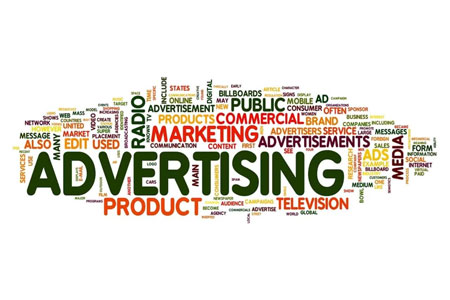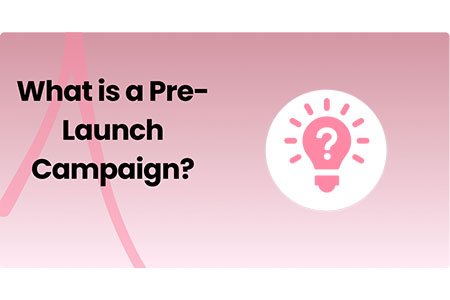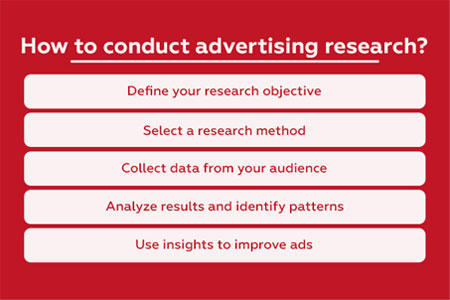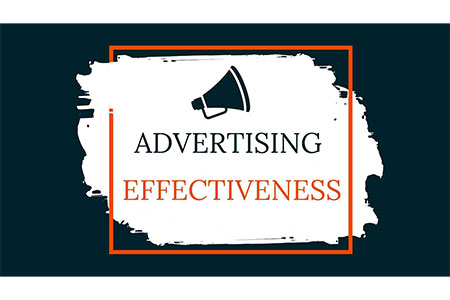
You launch an ad. You cross your fingers. Then you wait.
But what if you did not have to guess? What if you could know exactly what your audience thinks, what works, what does not, and where your money is best spent?
That is where advertising research comes in. It gives you the numbers behind the noise. It shows you if your catchy slogan is connected. It helps you avoid spending blindly and start spending wisely. Whether you are a startup with a tight budget or a large brand juggling multiple campaigns, advertising research helps in shaping ads that actually perform.
Most businesses spend more on advertising than they care to admit — and still feel unsure if it is working. You run a campaign, and the numbers look fine, but what is really going on in your customer’s mind? Did the ad leave an impression, or did it disappear like the rest of the noise? Advertising research helps you answer these questions with facts, not assumptions. It is not just about impressions and reach. It is about understanding why your message worked or did not, and using that knowledge to do better next time.
What is Advertising Research?

Advertising research is the study of how effective your advertising efforts are. It involves gathering information from the people you want to reach and using that data to shape your strategy. The purpose is simple, to remove the guesswork and give clarity.
Instead of relying on what seems creative or popular, advertising research tells you what actually resonates with your audience. It helps you decide where to place your ads, what to say, and how to say it so your brand stands out and gets remembered.
In the larger marketing process, advertising research plays a vital role. It supports the planning stage, refines the creative approach, and measures results after a campaign ends. When used consistently, it becomes a powerful tool that not only improves communication but also boosts your return on investment.
Types of Advertising Research
There are two broad advertising research types. Each takes place at a different stage of the campaign and serves a different purpose.
Pre-Campaign Advertising Research

This research takes place before the campaign begins. It is all about preparation. It helps you decide what message to deliver, which visuals to use, what tone to strike, and where your ads should appear.
You can test ideas, explore creative directions, and understand your audience better. Tools used here include:
● Surveys and polls
● Focus groups
● Audience profiling
● Competitor analysis
● Concept testing
It is like building a solid foundation before constructing a building. If you understand your audience before the campaign starts, you are already one step ahead.
Post-Campaign Advertising Research
This happens after your campaign has run. The goal here is to evaluate performance. What worked? What missed the mark? How did your audience respond?
Some useful tools and metrics for post-campaign analysis include:
● Social media engagement
● Website analytics
● Brand recall studies
● Conversion tracking
● Customer feedback
Post-campaign advertising research helps in identifying what to repeat and what to change, making it essential for long-term success.
How to Conduct Advertising Research?

Good research does not always mean expensive research. What matters most is clarity and purpose. Here are the basic steps to follow:\
- Set a Clear Objective
- Start by defining what you want to learn. Are you checking brand awareness? Testing a new ad concept? Measuring campaign success?
- Choose Your Method
- You can go for qualitative or quantitative research in advertising. Online surveys, data reports, and A/B testing all fall under quantitative methods.
- Know Your Audience
- Understand who you are researching. Define their age, interests, behavior, and buying patterns.
- Collect Data
- This could involve customer surveys, digital performance reports, sales figures, or online tracking.
- Analyze Your Findings
- Review the data and look for patterns. What parts of your campaign worked well? Where did the message fall flat?
- Apply the Insights
- Use what you learn to improve your ads. Make changes to your message, layout, platform, or targeting based on your findings.
The Significance of Advertising Research
You can have the biggest budget in your industry, but without research, you might still fall short. Advertising research's importance is clear when you want real results and accountability in your marketing.
● Makes Ads More Targeted
● You speak to the right people in the right way.
● Reduces Wasted Spend
● You stop running ads that bring no results.
● Improves Creative Strategy
● You know what type of content works best — humor, storytelling, facts, or emotion.
● Increases Return on Investment
● When you act on real feedback, your results improve.
● Builds Brand Trust
● Ads that connect well with people are more likely to build a positive brand image.
Without research, advertising becomes a game of chance. With it, you turn every campaign into a calculated move toward growth.
How to Make the Most of Your Advertising Research Findings?

Once you have data in hand, how do you use it? That is where many businesses fall short. Collecting data is just one part. Applying it correctly makes a real difference.
Here are some practical ways to use your findings:
● Segment Your Audience
● Do not treat your entire audience the same. Split them by age, location, or behavior. Apply insights to each group accordingly.
● Compare Campaigns
● See which campaign did better and why. Was it the message, the platform, or the offer?
● Optimize Your Channels
● If social media works better than print, you know where to shift your spend.
● Improve Future Creatives
● Use the feedback to adjust tone, visuals, or call to action.
● Keep Testing
● Even the best-performing ads can be improved. Regular testing keeps you ahead of the competition.
Great insights mean nothing if they are not used. Treat your findings like a playbook and use them to drive better strategy.
Key Elements of Advertising Research
To make advertising research work for your brand, you need to understand its core building blocks. These elements are what turn scattered data into a clear direction.
- Objective
- A defined question or goal that you want to answer.
- Audience
- The specific group of people whose opinions or behavior you are studying.
- Method
- The tool or technique you use, like interviews, online surveys, or quantitative research in advertising.
- Data Collection
- How and where do you gather your information? This includes social listening, tracking software, or customer feedback.
- Analysis
- Interpreting the information you collect to find patterns, connections, or gaps.
- Action Plan
- Turning your findings into steps that improve your advertising.
Each campaign may require different tools, but these elements always stay the same.
Understanding What Advertising Research Is and Isn't
To use advertising research effectively, you need to understand what it truly covers — and what it does not.
It is:
● Focused on advertising content, placement, and performance
● Designed to understand consumer reactions to ads
● Used for improving communication and campaign strategy
It is not:
● About product development or pricing strategy
● General market research
● About customer service or support experience
Many brands blur the lines between advertising research and other methods, leading to mixed signals. Clarity on the advertising research meaning is essential for using it correctly.
How to Conduct Advertising Research to Evaluate Campaign Effectiveness

Once your campaign ends, it is time to measure results. But measuring only impressions or views is not enough. You need to know if your ad made people think, feel, or act differently.
Here is how to evaluate your campaign properly:
- Set Clear KPIs
- Decide what success looks like. It could be more leads, better awareness, or improved conversion rates.
- Track the Right Data
- Look beyond surface metrics. Use tools that monitor behavior, not just numbers. Tools include Google Analytics, CRM data, and ad platform dashboards.
- Ask for Feedback
- Send surveys to those who saw your ad. What did they remember? What did they like or ignore?
- Compare Against Benchmarks
- Use past campaign data or industry standards to see if you are moving in the right direction.
- Study Platform Performance
- Break results down by channel. Did your video ad outperform the static one? Did mobile work better than desktop?
- Spot Trends
- Was there a peak in response after a specific ad placement or time of day?
- Use These Findings to Improve
- Once you have a clear picture, update your strategy. Shift your budget, redesign creatives, or retarget better.
While this process is effective, it is worth knowing some limitations of advertising research. Sometimes results may be influenced by external factors like market shifts or seasonal trends. That is why data should always be read in context, not isolation.
Conclusion
Advertising research is the bridge between what you think your ad says and how it is actually received. It helps you make smarter choices, reduce waste, and create messages that matter.
At Excellent Publicity, a data-driven advertising agency, we use advertising research to bring strategy and creativity together. From pre-launch studies to real-time campaign analysis, we help brands turn insight into action.
If you want ads that do more than look good — ads that truly work — connect with us. Let’s turn your next campaign into your smartest one yet.
FAQs
You can use Google Analytics, Meta Ads Manager, SurveyMonkey, SEMrush, Hotjar, and customer feedback tools. These help you track performance, understand your audience, and test ad effectiveness.
It reveals what your audience likes, needs, or avoids. Using that insight, you can shape ads that connect better and guide consumers toward interest, trust, and eventually buying.
Common mistakes include using small or random samples, leading questions, or ignoring real feedback. Always ask clearly, analyze fairly, and test again when in doubt.
Agencies test ad concepts, gather feedback, tweak messages, and track results. This helps make ads clearer, more targeted, and more appealing to the right audience.
It should be done before a campaign, during key moments, and after it ends. Regular research keeps your strategy updated and your ads relevant.



